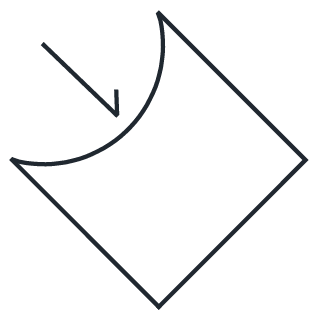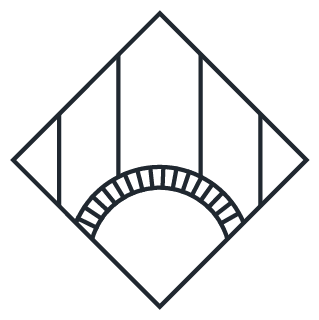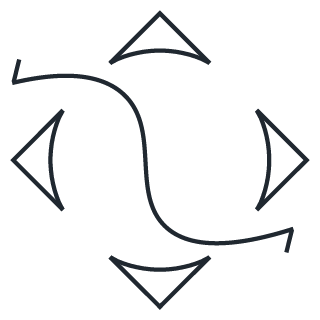Genk City Hall
Genk is a polycentric pocket-sized metropolis in search of an identity. It feels archetypically Belgian, intersected by busy regional roads and featuring a happy mishmash of architectural styles. Its centre is dominated by an uncharacteristically grand ensemble of oversized civic and commercial buildings. As a textbook example of late modernist dogma, they stand in isolation among charmless public greenery, oversized streets and an abundance of surface parking. It makes for a slightly bewildering spectacle at the heart of a city that peters out into quasi-suburban density after only a few streets. However this near monumental scale may well befit the city’s import to its wider hinterland and its historical significance as a mining region.
The last few years have seen some worthwhile interventions in Genk’s city centre to create more public space at a human scale. Within this transformation the City Hall could fulfil an important role, grounding the city symbolically as well as functionally. An overhaul of its internal workings could have a positive impact far beyond its material confines, a significant step in an overdue reimagination of the city.
A public palace for the people
The floor plan of Genk’s City Hall wraps around a central outdoor courtyard, like an urban perimeter block in building form. Its palatial proportions, top-heavy bulk and dark brick cladding give the building a confident but austere presence. Yet on closer examination its clearly articulated structure and spatial qualities open it up to a field of possibilities.
Initially the brief comprised the interior renovation of one department within the building. After careful study, POLO managed to convince the city it was worthwhile to have a holistic look at the whole of City Hall in order to harness its latent qualities.
For us this became a deep dive into the fundamentals of this building as well as the wants and needs of its daily users. As such it became an opportunity to formalise our approach to integrated space planning, consulting with staff representatives from different departments.
The administration’s current interiors are somewhat labyrinthine in layout, without a clear identity or hierarchy of functions, the result of successive refurbishments and alterations. We investigated the internal logic of the building’s original design in order to design flexible spaces which fully exploit its core qualities.
A place for the city to meets its citizens
In our design we expand on the basic dual structure of the City Hall. The eastern block becomes a semi-public open house for meeting and convening. The administration is housed in the three remaining blocks which are raised above the terrain. Vertical cores on every corner of the square floor plan provide quick links between different departments and offer opportunities for parts of the building to function separately.
The east wing is accessible from different directions; traffic flows from staff, visitors and wedding guests can be easily choreographed into separate routes. Here are also the service counters where the citizen can interact with the administration.
At the southern end of this eastern block we plan a stacking of semi-public and representative spaces. At the ground floor is room for exhibitions and displays about Genk’s latest projects. Here we also find the dedicated entrance and drop-off for couples and guests using the wedding hall on the first floor — accessed by an existing ceremonial staircase. This wedding hall doubles as council chamber, a flexibility of functions facilitated by custom-designed furnishings. On the two floors above there are meeting rooms which are shared between the different departments and can be used for interfacing with citizens also.
On the first and third floors of the east wing we find spaces which are currently subdivided into various rooms and offices. When cleared these could become expansive spaces for collective use, offering sweeping views of both the town square and the internal courtyard.
On the first floor this is the “Forumplein” (Forum Square), a multipurpose indoor plaza which can adapt to different events. Located between the wedding hall and the theatre, it can act as a perfect spillover space for either but can also host its own events.
On the third floor a staff canteen with multipurpose rooms could be accommodated in a space with impressively high ceilings. Here gym classes and health centred activities for employees or external organisations can take place.
A workplace designed for interaction
The other three wings complete the square courtyard figure of the building. While the current building layout integrates the Academy of Arts within the premises, the city has decided to relocate these facilities to a new building. While we welcomed the opportunities for functional cross-pollination in the previous integrated approach, the new arrangement frees up space to rent out to different tenants. This potentially creates a whole new dynamic.
We undertook a thorough analysis of the current office layouts and engaged the employees in a dialogue about their work environment. We found the current space usage per person was high due to the subdivision of space into individual workspaces. Our ambition was to open up office layouts to achieve higher occupancy while forging connections between departments, increasing interaction between employees and improving circulation.
Due to staff preferences we still provide dedicated personal work stations instead of implementing activity-based working. However this traditional approach is enriched by a variety of breakout, meeting and concentrated work spaces.
In our proposal offices are linked by a continuous promenade across different departments. This promenade functions as a street, inspiring chance encounters and interactions. Strategically located enclosed units create various work environments and break up the office landscape. Across the different departments a certain playful uniformity is achieved by using similar elements in different constellations. The aim is to maintain transparency and clarity of structure.













